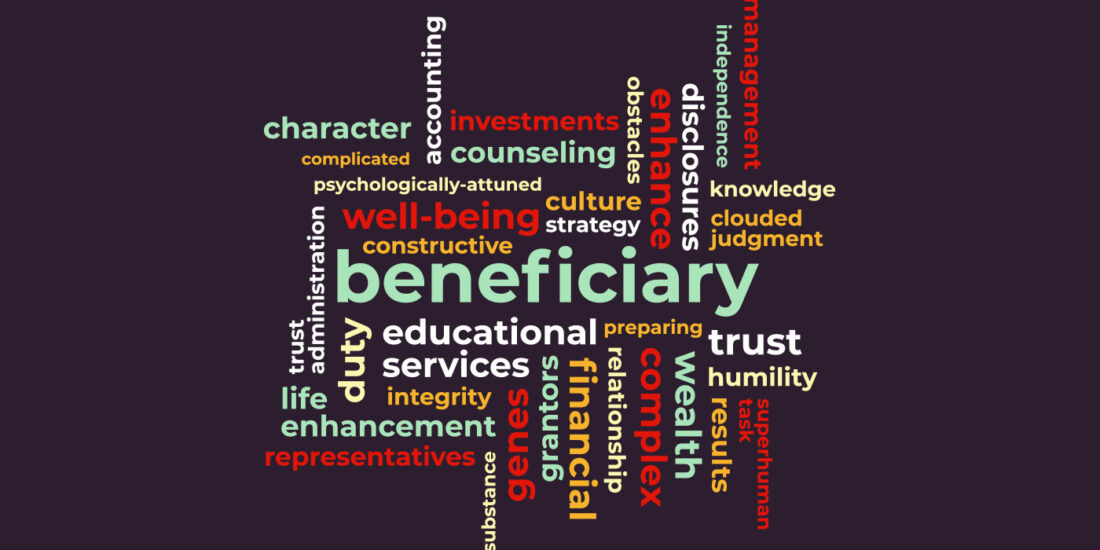
View this edition in our enhanced digital edition format with supporting visual insight and information.
Thank you to this week’s contributor, Natasha Pearl, for continuing our series of articles by presenters at the virtual 2020 FFI Global Conference, October 26-28. In her article, Natasha outlines the importance of developing an effective infrastructure as an important element in wealth preservation for family enterprises.
Family enterprise owners are typically laser-focused on growing wealth. Preserving wealth, on the other hand, may not be an immediate priority.
There is a critically important element in protecting wealth, an element that can prevent later generations from losing it all: infrastructure. Not bridges, roads and harbors, but Wealth Preservation InfrastructureTM. This consists of the processes, systems, and resources required to reduce risk, provide consistent service levels, avoid surprises, and improve quality of life. A surprising number of families and family enterprises lack infrastructure, and this is a fundamental risk to wealth preservation.
Examples of Wealth Preservation InfrastructureTM include consolidated investment reporting, up-to-date cybersecurity measures, crisis planning, medical/wellness management, residential preventative maintenance, and next gen education. A particularly important infrastructure best practice is proactive medical and wellness management for all family members. Clients who had this in place prior to the events of 2020 experienced significantly less stress and had the luxury of knowing that any medical questions and issues that arose could be immediately addressed.
The pandemic and associated events have been an enlightening stress test. Families with strong infrastructure, with robust crisis plans as a critical component, are functioning at or above their pre-pandemic high level. On the other hand, families that lack infrastructure are experiencing major challenges due to the pandemic and related events, with family members, residential staff, business employees, and family office staff all potentially suffering as a result. Here are some recent, timely examples:
- A lack of substantive disaster plans meant families had to scramble in order to communicate, to obtain essential supplies and protective gear, and to ensure their safety and comfort.
- Many found they were unable to obtain vital “work from home” equipment, including laptops, tablets, even desks and chairs, at any price without long delays. These delays effected their staff and hampered their ability to monitor their own operating businesses, investments, and liquidity.
- Without consolidated investment/asset reporting and a full picture of current liquidity, it was difficult to forecast liquidity requirements, rebalance assets, or take advantage of emerging investment opportunities.
- Weak cybersecurity, a particularly important issue when working from home rather than from a “hardened” office environment, left families vulnerable to identity theft as well as wire transfer fraud, “spear phishing,” and other types of cybercriminal activity.
- In the absence of proactive medical and wellness management, families have been unable to obtain timely answers to urgent questions about symptoms, testing, treatment, and preventative measures.
- Inconsistent or non-existent processes for residential maintenance, coupled with intensive use, have revealed flaws including worn-out appliances, leaks, and fire hazards that should have been proactively addressed but were not.
- Business-owning families had additional responsibilities to employees and other stakeholders, which were difficult to address while scrambling and distracted with the issues described above.
Lack of infrastructure has consequences that will be familiar to those in that unfortunate position. One of the most distracting is the “communications blizzard.” When the infrastructure is inadequate, issues arise that prompt a flurry of urgent emails, texts and calls in attempts at resolution. These communications are unstructured, uncategorized, and not measured or analyzed—a tremendous waste of time. Deficient infrastructure can cause residential water leaks or fire, cybersecurity breaches, and compliance issues, not to mention missed deadlines, errors on tax returns and other filings, misclassified staff and other labor law violations, and lapsed insurance on vehicles. Penalties, sanctions, and lawsuits may follow, as well as reputational damage. These issues accumulate over time and can have a devastating impact on wealth.
Why is infrastructure neglected or even ignored? The reasons our clients cite include gradual and unplanned asset accumulation (multiple residences, automobiles and aircraft), over-emphasis on cost reduction, and a feeling that resources should be aimed at income production rather than invested in infrastructure. Often it has not been a conscious decision, and once the client understands the benefits, they take action to set up the infrastructure that will protect them going forward.
There are 7 systematic steps to creating and maintaining robust Wealth Preservation InfrastructureTM:
Step 1: Identify the areas that require infrastructure improvement.
Step 2: Prioritize the highest-risk and highest-impact.
Step 3: Quantify current resource allocation and document current processes.
Step 4: Identify the infrastructure “gap” and determine which areas are highest impact AND most easily improved.
Step 5: Create a plan and obtain agreement from stakeholders.
Step 6: Implementation (hint: this is the hardest step!):
- Identify an implementation “owner” who will lead the process and ensure accountability.
- It may be necessary to recruit experienced external staff to help lead the effort and to identify appropriate vendors and service providers to provide what is missing. However, family members and/or existing leadership must be out in front of this effort to ensure cooperation from all stakeholders.
- Organizational change is challenging and there are many forces that will try, consciously or otherwise, to stop it. Trained change management expertise is essential.
- Convene an Implementation Steering Committee (ISC) consisting of key stakeholders to oversee and manage the implementation process.
- The organization may appear to need additional human resources, but first assess and analyze existing resources to determine if they can be trained or retrained. Some existing resources may need to be terminated, and an attorney who is experienced with employment issues should be consulted.
- Competent “engineers” are needed for implementation, and it is vital to identify internal or consulting resources who have “built that type of bridge before.” The alternative is to spend a lot of time and money building a “bridge,” only to see it fail when cars drive over it for the first time.
Step 7: Ongoing monitoring, measurement and accountability:
- Specific actionable metrics with appropriate standards should be created and tracked, with the continued oversight of the ISC. For example, track “preventable maintenance issues,” such as appliance repairs, that could have been proactively prevented.
As part of the measurement of the impact of infrastructure, incorporate positive financial impacts that some of our clients have cited; for example:
- Tax reductions as a result of entity optimization or other means
- Reduced insurance premiums due to preventative maintenance and installation of best-in-class early warning systems (e.g., leak detection)
- Reduction in staff expense as some processes are automated
- Increased ability to participate in sophisticated investment and estate-planning strategies
Do not underestimate the potential quantifiable value of infrastructure. One of our clients reported that annual savings from their infrastructure implementation more than paid for the annual cost of their single family office that supports the client and his multi-generational family.
Infrastructure development and implementation will require a significant investment of time and money, but the benefits are profound:
- Reduced time spent on low-value activities
- Increased time available for strategic planning and creativity
- Ability to identify and participate in opportunities as they arise
- Flexibility to customize services for individual family members
- Increased staff productivity and, often, a reduction in staff costs
- Peace of mind from knowing that the infrastructure is in place
Most importantly, infrastructure ensures that there are processes and systems that will serve future generations and will ensure the sustainability of the family wealth.
About the Contributor
 Natasha Pearl founded Aston · Pearl in 2003, providing objective and confidential advisory to more than 90 family enterprises and private clients. Based on this experience, her firm has developed a proprietary approach to Wealth Preservation InfrastructureTM. In 2015, Natasha was named one of “The 50 Most Influential Women in Private Wealth.” She has served on the Dean’s Board of Advisors of Harvard Business School and until recently chaired the Dean’s Leadership Council at the Harvard Graduate School of Education. She will co-present “The Blind Spot Preventing Wealth Preservation: Infrastructure” at the October 26-28 FFI virtual global conference this year.
Natasha Pearl founded Aston · Pearl in 2003, providing objective and confidential advisory to more than 90 family enterprises and private clients. Based on this experience, her firm has developed a proprietary approach to Wealth Preservation InfrastructureTM. In 2015, Natasha was named one of “The 50 Most Influential Women in Private Wealth.” She has served on the Dean’s Board of Advisors of Harvard Business School and until recently chaired the Dean’s Leadership Council at the Harvard Graduate School of Education. She will co-present “The Blind Spot Preventing Wealth Preservation: Infrastructure” at the October 26-28 FFI virtual global conference this year.

View this edition in our enhanced digital edition format with supporting visual insight and information.





